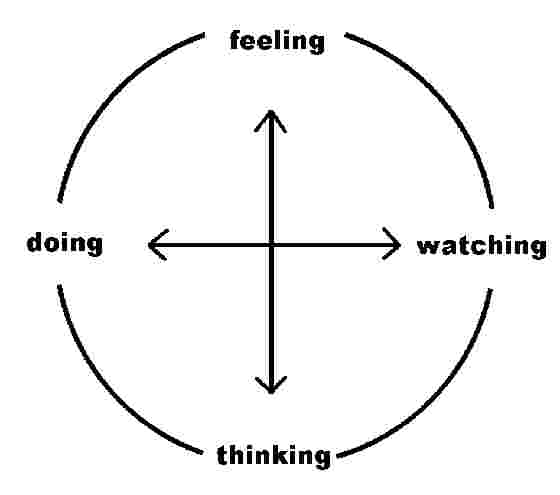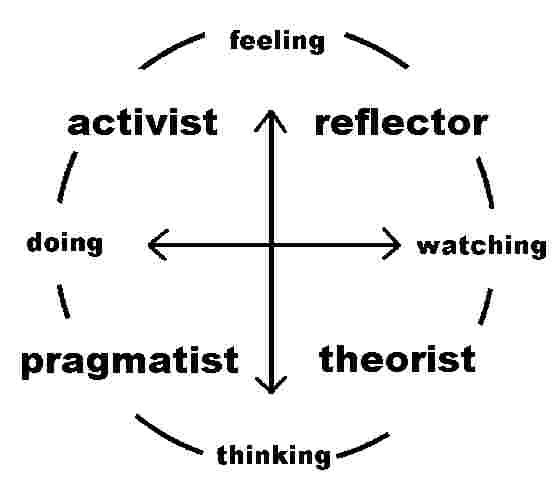David Kolb developed this learning styles model in 1984. Kolb's learning styles model is based on two lines of axis (continuums): our approach to a task - (preferring to do or watch), and our emotional response (preferring to think or feel). The theory sets out these four preferences, which are also possible different learning methods:
These learning styles characteristics are normally shown as two lines of axis. The east-west axis is called the Processing Continuum (how we approach a task), and the north-south axis is called the Perception Continuum (our emotional response, or how we think or feel). This also describes four different learning styles (and also methods):
 |
The combination of where our preference lies on each axis produces four possible learning style types:
 |
Knowing a person's (and your own) learning style enables learning to be orientated according to the preferred method. That said, everyone responds to and needs the stimulus of all types of learning style - it's a matter of using emphasis that fits best with a person's learning style preferences:
For instance - don't expect theorists to be comfortable being thrown in at the deep end without notes and instructions. Conversely, activists may become frustrated if unable to get hands on experience as soon as possible.
As with any other model, this is a guide, not an absolute set of rules.